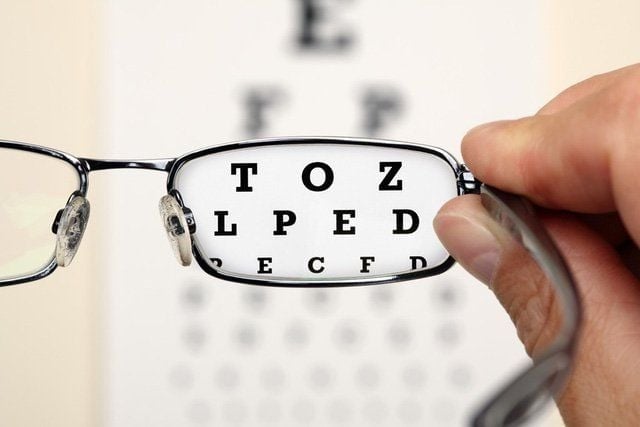Records from a number of medical facilities show that recently, there have been many patients with flu and measles, including many children, along with eye-related diseases such as conjunctivitis and keratitis.
Beware of eye diseases related to flu and measles in children
Records from a number of medical facilities show that recently, there have been many patients with flu and measles, including many children, along with eye-related diseases such as conjunctivitis and keratitis.
After the Tet holiday, the prolonged cold air has caused the incidence of influenza and respiratory diseases, including measles, to increase. In addition to common symptoms such as cough, runny nose, nasal congestion and rash, many cases have serious complications such as pneumonia, bronchitis, and respiratory failure requiring hospitalization for monitoring.
 |
| Illustration photo. |
In particular, many patients with respiratory infectious diseases such as flu and measles have symptoms related to eye diseases, in which some severe cases can lead to vision loss.
A typical example is the case of Le Nguyen Manh (4 years old). He had symptoms of dry cough, runny nose and mild fever. The family treated him at home but later discovered that he had watery eyes and a lot of eye discharge.
After a week of saline eye drops and eye drops that were ineffective, the family took the child to see a doctor. The doctor found that the child's eyelids were swollen, had thick, sticky pseudomembranes, and had corneal epithelial damage (the corneal surface was peeled off and no longer intact). If not treated promptly, the disease could lead to infection and affect vision.
After being diagnosed, Manh was treated according to the regimen and closely monitored. The treatment results were very good, the symptoms gradually decreased and the baby was completely cured after a week.
According to eye specialist, Dr. Luong Thi Anh Thu, some respiratory infections such as influenza and measles can cause eye diseases, such as conjunctivitis, keratitis, and conjunctival hemorrhage. Symptoms of eye diseases include watery eyes, glare, itching, gritty eyes, thick eye discharge, dry eye feeling, eye fatigue, and decreased vision.
The cause of eye symptoms in cases of flu and measles may come from the habit of covering the mouth with bare hands and then rubbing the eyes, causing viruses and bacteria to spread from the hands to the eyes. Children, not yet aware of the importance of hand hygiene, often have the habit of touching objects or rubbing their eyes, thereby easily spreading diseases.
Doctor Anh Thu emphasized that most parents only pay attention to respiratory symptoms such as cough and runny nose and pay little attention to eye symptoms, which makes the condition more serious."
Keratitis, conjunctivitis or corneal hemorrhage are not difficult diseases to treat. However, many families have the habit of buying eye drops themselves or using drugs without a doctor's prescription, leading to improper treatment or the disease may become more severe, affecting vision. When there are any unusual signs in the eyes, parents should take their children to see a doctor for timely treatment.
In addition to seasonal diseases, children can also suffer from many congenital eye diseases, such as glaucoma, cataracts, myopia, and retinopathy of prematurity (ROP). These diseases often progress silently and are difficult to detect without specialized equipment. In particular, children are often unable to accurately describe the symptoms of the disease.
Early detection of congenital vision problems is very important for effective treatment and minimizing complications. Associate Professor, Dr. Nguyen Thi Thu Hien, Head of the Department of Refractive Surgery and Myopia Control at Tam Anh High-Tech Eye Center, said that to limit the effects of congenital eye diseases, children need to be monitored and treated early, especially before the age of 7.
For school-age children, myopia is one of the common refractive errors. Not only does it cause vision loss, if not controlled promptly, myopia can increase, affecting the child's ability to concentrate, learn, and develop physically. Prolonged severe myopia can also lead to serious complications such as strabismus, amblyopia, and retinal degeneration.
Source: https://baodautu.vn/canh-giac-voi-benh-ly-ve-mat-lien-quan-den-dich-cum-va-soi-o-tre-em-d247800.html


































Comment (0)